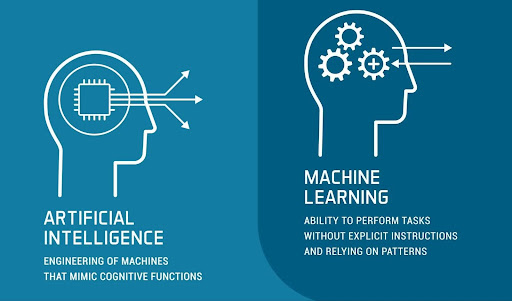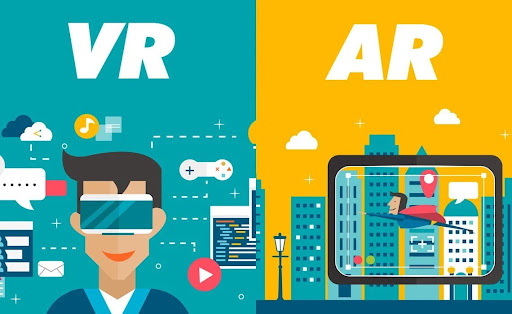Introduction
The pace of technological advancement shows no signs of slowing down. As we enter 2024, emerging technologies enhance industries and reshape them entirely. These advancements create new opportunities, drive efficiency, and even revolutionise business operations.
Companies that fail to adapt risk falling behind, while those that embrace these innovations are better positioned to lead in their industries.
This blog will explore the key technology trends shaping industries in 2024, from artificial intelligence to green technology, and how businesses can leverage these trends to stay ahead of the curve.
1. Artificial Intelligence and Machine Learning: Beyond the Hype
Artificial Intelligence (AI) and Machine Learning (ML) have been buzzwords for years, but in 2024, they are far from just hype. These technologies are maturing, and their real-world applications are becoming more widespread and impactful. Industries like healthcare, finance, and manufacturing are experiencing significant transformations due to AI and ML.

Source: Turing
In healthcare, AI is used to analyse vast amounts of medical data to predict disease outbreaks, customise treatment plans, and even assist in surgeries.
For example, AI-driven predictive analytics are helping doctors identify patients at risk for conditions like heart disease, allowing for early intervention and better outcomes.
The finance industry leverages AI for fraud detection, risk management, and personalised customer service. AI-powered chatbots, for instance, improve customer interactions by providing quick and accurate responses to queries, significantly enhancing user experience.
In manufacturing, AI-driven automation optimises production lines, reduces waste, and increases efficiency, allowing companies to produce more with less.
The key shift in 2024 is that businesses are moving from merely experimenting with AI to fully integrating it into their operations. AI is no longer a futuristic concept but a practical tool companies use to drive growth, improve efficiency, and gain a competitive edge.
2. The Rise of 5G and Its Impact on Connectivity
5G technology is revolutionising connectivity, offering faster speeds, lower latency, and more reliable connections than ever before. This next-generation network is a game-changer for various industries, enabling previously impossible innovations.
One of 5 G’s most significant impacts is on the Internet of Things (IoT). With 5G, IoT devices can communicate faster and more efficiently, paving the way for advancements in smart cities, autonomous vehicles, and industrial automation.
For example, 5G is crucial for developing autonomous cars, as it allows for real-time communication between cars and their surroundings, improving road safety and efficiency.
5G enhances telemedicine in healthcare by providing the high-speed connections needed for real-time consultations and remote surgeries. Patients in remote areas can now access quality healthcare services without travelling, making healthcare more accessible and equitable.
Businesses are also leveraging 5G to improve operations. For instance, in manufacturing, 5G-enabled robots can communicate instantly with each other, optimising production processes and reducing downtime.
In the retail industry, 5G is improving the in-store experience with augmented reality (AR) applications that provide customers with detailed product information and personalised recommendations.
Overall, 5G is not just an upgrade in connectivity; it’s a catalyst for innovation, driving advancements across multiple industries and opening up new business possibilities.
3. Edge Computing: Bringing Data Processing Closer to Home
As businesses generate more data than ever before, the need for efficient data processing has become critical. This is where edge computing comes into play.
Unlike traditional cloud computing, which relies on centralised data centres, edge computing processes data closer to the source—a factory floor, a retail store, or a remote healthcare facility.
Edge computing is essential in industries that require real-time data processing.
For example, edge computing allows for real-time monitoring and control of machinery in manufacturing, reducing latency and improving response times. This enables faster decision-making and enhances operational efficiency.
Edge computing processes data from wearable devices and remote monitoring systems in healthcare. By analysing data locally before they become critical, healthcare providers can quickly identify issues and intervene, improving patient outcomes and reducing the burden on centralised data centres.
Retailers are also embracing edge computing to enhance the customer experience. By processing data at the store level, retailers can offer personalised promotions and optimise inventory management in real-time. For example, edge computing can analyse shopper behaviour and adjust digital signage to display relevant offers, improving customer engagement and boosting sales.
Edge computing is helping businesses reduce latency, enhance data security, and improve decision-making, making it a vital technology trend in 2024.
4. Blockchain Technology: Beyond Cryptocurrencies
Blockchain technology, often associated with cryptocurrencies, is proving to be more than just a foundation for digital currencies.
In supply chain management, blockchain is being used to create transparent and immutable records of every transaction, from raw materials to finished products. This ensures that all parties in the supply chain have access to the same information, reducing fraud and improving efficiency. For example, Walmart has implemented blockchain technology to track the origin of food products, improving food safety by making it easier to trace contaminated items.
In the finance industry, blockchain is streamlining processes such as cross-border payments, making them faster, cheaper, and more secure. Traditional financial systems often involve multiple intermediaries, leading to delays and increased costs.
Blockchain eliminates the need for intermediaries by allowing transactions to be verified and recorded directly on the distributed ledger. This not only speeds up transactions but also reduces the risk of fraud.
Healthcare is also benefiting from blockchain technology. Blockchain is improving data security and patient privacy by providing a secure and transparent way to store and share patient records. For instance, patients can control who can access their medical information, ensuring that their data is used only for authorised purposes.
Blockchain is a versatile technology beyond cryptocurrencies, offering practical solutions for transparency, security, and efficiency in various industries.
5. Quantum Computing: The Next Frontier
Quantum computing is one of the most exciting and potentially transformative technologies. While still in its early stages, quantum computing promises to revolutionise industries by solving complex problems beyond classical computers’ capabilities.
At its core, quantum computing uses the principles of quantum mechanics to process information in ways that classical computers cannot. This allows quantum computers to perform calculations at unprecedented speeds, making them ideal for drug discovery, financial modelling, and optimising supply chains.
In the pharmaceutical industry, quantum computing could significantly speed up drug discovery by simulating molecular interactions at the quantum level. This would enable researchers to identify promising drug candidates much faster than traditional methods, potentially leading to quicker development of life-saving medications.
In finance, quantum computing could transform risk analysis and portfolio optimization. By processing vast amounts of data simultaneously, quantum computers could help financial institutions make more informed decisions, reducing risk and improving returns.
However, quantum computing presents significant challenges. The technology requires highly specialised skills and equipment, and current quantum computers are still prone to errors. Despite these challenges, major tech companies like IBM and Google are making strides in quantum computing research, with significant breakthroughs expected in 2024 and beyond.
Quantum computing may still be in its infancy, but its potential to transform industries is enormous, making it a technology trend to watch closely in the coming years.
6. The Growth of the Internet of Things (IoT): Connecting Everything
The Internet of Things (IoT) will continue expanding in 2024, connecting more devices and systems than ever. IoT refers to the network of physical devices—such as sensors, machines, and appliances—connected to the internet and can collect and share data.
IoT creates smart farms in agriculture, where sensors monitor soil conditions, weather patterns, and crop health in real time. This data allows farmers to make informed decisions about irrigation, fertilisation, and harvesting, leading to increased yields and more sustainable farming practices.
In healthcare, IoT devices are revolutionising patient care by enabling remote monitoring and real-time data collection. For example, wearable devices can track a patient’s vital signs and alert healthcare providers if abnormalities are detected. This allows for early intervention and reduces the need for hospital visits, improving patient outcomes and reducing healthcare costs.
Smart homes are another area where IoT is making a significant impact. Connected devices such as smart thermostats, lighting systems, and security cameras allow homeowners to control their environment remotely, enhancing convenience, security, and energy efficiency.
However, the growth of IoT also presents challenges, particularly in terms of security. With so many devices connected to the Internet, the potential for cyber-attacks increases. Ensuring IoT systems are secure and data is managed effectively will be critical as technology evolves.
IoT is transforming industries by enabling real-time data collection and automation, improving efficiency, decision-making, and overall quality of life.
7. Sustainability and Green Technology: The Industry Imperative
As concerns about climate change and environmental sustainability grow, industries increasingly turn to green technology to reduce their carbon footprint and promote sustainable practices. In 2024, sustainability is not just a trend but an industry imperative.
Emerging technologies are crucial in supporting green initiatives. Renewable energy technologies such as solar and wind power are becoming more efficient and affordable, making it easier for businesses to transition to sustainable energy sources. For example, advances in solar panel technology have increased energy conversion efficiency, allowing companies to generate more power from smaller installations.
The automotive industry also embraces green technology with the rise of electric vehicles (EVs). Companies like Tesla and traditional automakers are investing heavily in EV production, reducing reliance on fossil fuels and lowering greenhouse gas emissions. Additionally, innovations in battery technology are extending the range of EVs and reducing charging times, making them more practical for everyday use.
Sustainable manufacturing is another area where green technology is making an impact. Companies are adopting circular economy principles, which focus on reducing waste by reusing materials and designing products for longevity. For example, Patagonia, a leading outdoor clothing brand, uses recycled materials in its products and encourages customers to repair and reuse items rather than discard them.
Integrating sustainability into business operations is good for the planet and beneficial for companies. Consumers increasingly favour brands that demonstrate a commitment to environmental responsibility, and companies that lead in sustainability are likely to see increased customer loyalty and market share.
8. Augmented Reality (AR) and Virtual Reality (VR): Transforming User Experiences
Augmented Reality (AR) and Virtual Reality (VR) have been steadily gaining traction, and by 2024, they will become mainstream technologies with applications across various industries. AR overlays digital information onto the real world, while VR creates immersive, computer-generated environments.

Source: RobotLab
AR enhances the shopping experience in retail by allowing customers to try on clothes virtually, visualise furniture in their homes, or see how different paint colours would look on their walls. This improves customer satisfaction and reduces returns, saving retailers time and money.
Education is another sector where AR and VR are making a significant impact. Virtual classrooms and interactive simulations provide students with immersive learning experiences beyond traditional textbooks. For example, medical students can use VR to practice surgeries in a risk-free environment, gaining valuable hands-on experience.
The entertainment industry also embraces AR and VR, offering more immersive and engaging experiences. VR gaming, in particular, has seen rapid growth, with players able to interact with virtual worlds in previously impossible ways. AR is also used in live events and sports broadcasts to provide viewers with real-time information and enhanced visual effects.
As AR and VR evolve, they transform how we interact with the world around us, offering new opportunities for businesses to engage with customers and enhance user experiences.
Conclusion
The technology trends shaping industries in 2024 are not just about keeping up with the latest gadgets or software; they fundamentally transform how businesses operate and compete in the market.
From AI and 5G to quantum computing and green technology, these innovations drive efficiency, create new opportunities, and set the stage for the industry’s future.
Staying updated with these trends is crucial for any business that wants to remain competitive and thrive in an ever-evolving landscape. By embracing these emerging technologies, companies can improve their operations and position themselves as industry leaders.
As we move into 2024, it’s clear that the businesses that succeed will be those that are not just aware of these trends but actively integrating them into their strategies.
Now is the time to explore how these technologies can be leveraged to drive growth and innovation in your business. The future is here—are you ready to embrace it?





